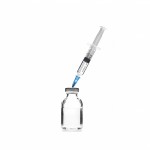 A chemical in bananas has been found to inhibit HIV, according to research findings from a University of Michigan Medical School published in the March 19 issue of the Journal of Biological Chemistry. According to the study authors, this may lead to the development of inexpensive microbicides to prevent HIV transmission and, quite possibly, novel compounds to treat the disease.
A chemical in bananas has been found to inhibit HIV, according to research findings from a University of Michigan Medical School published in the March 19 issue of the Journal of Biological Chemistry. According to the study authors, this may lead to the development of inexpensive microbicides to prevent HIV transmission and, quite possibly, novel compounds to treat the disease.
Mannose-specific lectins—naturally occurring chemicals in plants that bind to sugars on the surface of disease-causing microorganisms such as viruses—have been of interest to researchers, given their ability to halt the chain of reaction that leads to a variety of infections.
The test tube studies conducted by Michael Swanson, a doctoral student at the University of Michigan, and his colleagues, indicate that a lectin isolated from the common banana binds to the sugar-rich HIV envelop protein gp120. Not only may this prove useful in the development of vaginal and rectal microbicides to prevent HIV transmission, Swanson and his fellow authors speculate, but the HIV-inhibiting lectin—dubbed BanLec—may also have therapeutic potential.
The University of Michigan team discovered that BanLec is similar in potency to Fuzeon (enfuvirtide) and Selzentry (maraviroc), two U.S. Food and Drug Administration–approved fusion/entry inhibitors. Swanson’s group argues, however, that BanLec could be cheaper to create than current antiretrovirals, which use synthetically produced components.
BanLec may also provide a wide range of preventive and therapeutic protection against drug-resistant virus. “The problem with some HIV drugs is that the virus can mutate and become resistant, but that’s much harder to do in the presence of lectins,” Swanson said. “Lectins can bind to the sugars found on different spots of the HIV envelope, and presumably it will take multiple mutations for the virus to get around them.”
Swanson pointed out that the clinical use of BanLec is years away. But he is currently developing a process to molecularly alter BanLec to enhance its potential clinical utility.






14 Comments
14 Comments